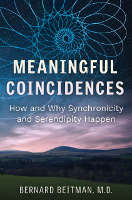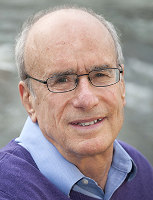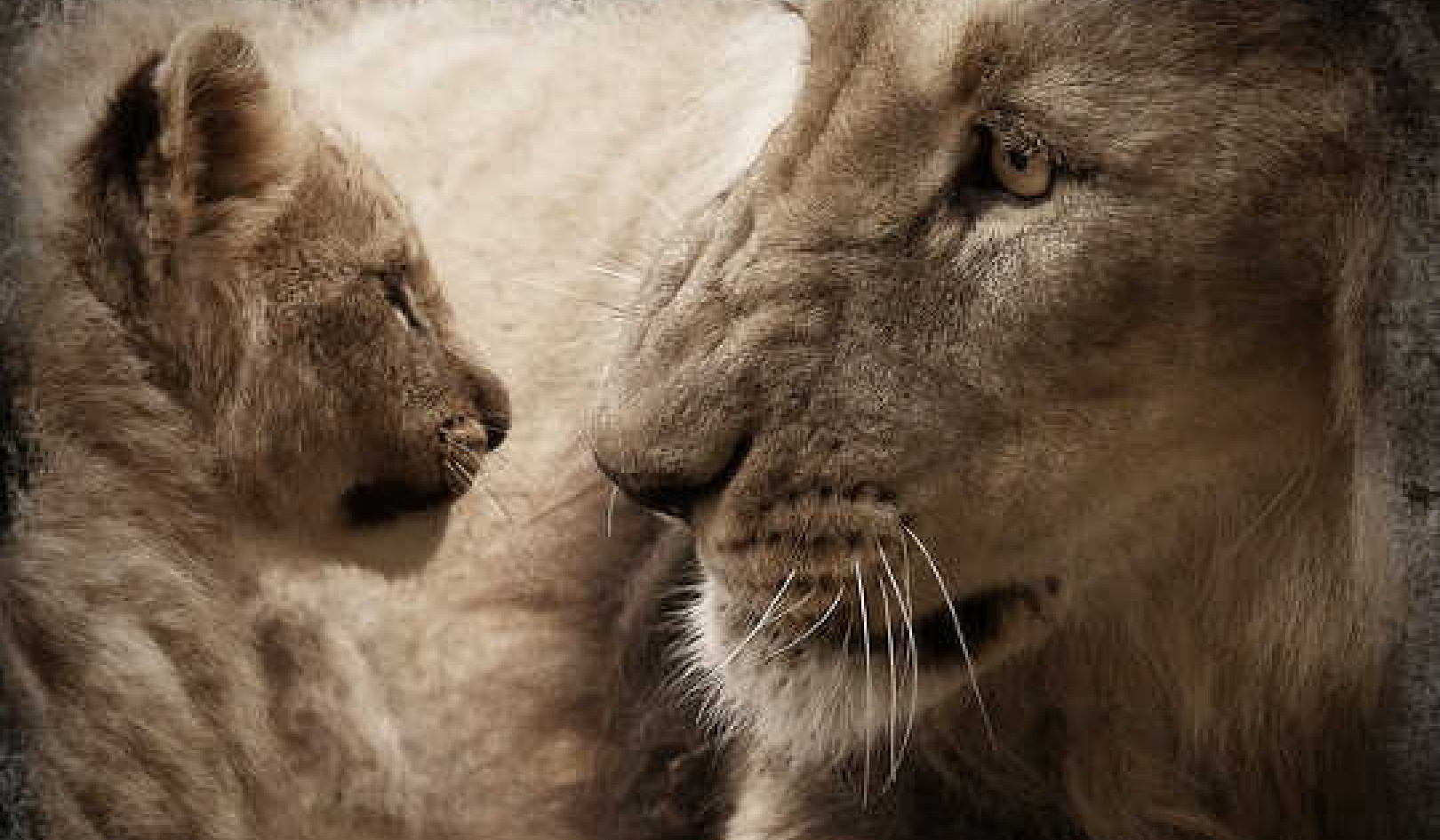
Image by annca
Throughout human history, coincidences have served as clues to undiscovered aspects of the natural world, individual minds, interpersonal relationships, spiritual evolution, science, technology, art, business, and society. Their surprise stimulates curiosity, which activates personal self-observers.
Because many meaningful coincidences involve striking parallels between mind events and environmental events, examination of their uses and explanations can expand human understanding of our relationships between mind and environment.
The Invisible Threads That Connect Us
Mind-mind and some mind-object (where the object is a person) coincidences point to close connections between and among people. These close connections suggest that each human being may be part of something greater. Common phrases suggesting this reality include ’re all in this together” or “everything is connected.”
The something greater can be conceptualized as the Collective Human Organism (CHO), with each person functioning as a cell in this organism. This idea begins to answer the question about how each of us is part of the greater whole.
Meaningful coincidences illuminate the invisible threads that connect us to each other, to our environment, and to the other living creatures surrounding us. They highlight our shared mental and emotional participation in the psychosphere. They also help to pave the way to crystalizing the unique gift each person brings to their participation in the CHO by sharpening their own identity while simultaneous illuminating their connecting invisible currents.
Human Beings Are An Evolving Organism
The CHO (Collective Human Organism) may be imagined in human form to stride our planet with its head in the clouds, its mind connected to its Higher Self in the psychosphere, its feet with roots moving through the ground. Currently those big feet are stomping out the life of many living things and those big hands are selfishly grabbing resources with little regard for its habitat.
Today, there is more and more frequent reference to Earth, to the planet, and to the totality of our habitat. So much so, in fact, that now the idea of Earth as an evolving, giant organism is part of ordinary conversation. The CHO idea will take time to take its place in everyday conversations. The very popular history of humanity, the book Sapiens: A Brief History of Humankind, has helped to propel the idea that we human beings are also an evolving organism.
Several conclusions follow, the first being that the CHO has a mind. This mind would have a collective conscious and collective unconscious. The collective conscious holds current social, cultural, scientific, religious, and media-generated ideas. The collective unconscious holds memories, conflicts, emotions, and the multiple selves of diverse human self-identities.
A Collective Self-Observer
Like individuals, the CHO also could develop a collective self-observer. Using patterns suggested by systematic analysis of large numbers of coincidence stories, the collective self-observer could look for new clues that help to peer behind the curtain of our ignorance about how to proceed. Particular emphasis would be placed on clues that will help to heal the CHO and divert it from destroying our habitat. These serendipity- and synchronicity-fueled discoveries will supplement rational, logical approaches to investigating reality and solving the multiple threats to human existence.
To survive, the CHO would need to become more aware of itself and the destruction it is causing and to develop a collective conscience to guide its ethical and moral development. As a cell in the CHO, each person has something to contribute to its overall successful functioning.
Each person is encouraged to ask, “What can I contribute to the best functioning of the Collective Human Organism?” Personal coincidences will help to answer this question.
We are in a battle for people’s imagination about the future. Can we gather together to first imagine and then acknowledge the existence our Collective Human Organism?
Challenges to The Collective Human Organism
The CHO is tortured by autoimmune diseases like war, poverty, starvation, police brutality, religious hatred, autocratic governments, corporate amorality, and institutionalized racism. The body is attacking itself. It is also afflicted by blood clots closing off arteries to large groups of cells through callous indifference to mass migration, poverty, starvation, immigrants, inadequate healthcare, inadequate public health, mental illness, and drug abuse. The deliberate actions and inaction by governments, corporations, and the very wealthy are depriving large groups of cells of nutrition.
Like most individuals, the CHO has several competing selves. One kind of self is certain it will survive anything because their God or their money or both will save them, that Mother Earth is here to serve them, and that her bounty is endless. Another kind of self is convinced that total annihilation is imminent, that Mother Earth is being stretched to the limit of her gift-giving ability. Still another recognizes the wisdom of including the consciousness of animals, plants, and fungi in imaging the future.
These selves are barely acknowledged by the other selves because each one is striving for domination of the mind of the CHO. They are battling for the organism’s images of the future. The multiple conflicting forces are creating chaos in the collective mind. These forces need recognition and organizing to bring the coherence necessary for imagining a livable future.
The Development of the Necessary Collective Mind
The development of the necessary collective mind is underway. The internet is providing an increasingly strong scaffolding for the operations of the psychosphere. Our minds are increasingly tethered to it as a metaphor to our connections within the psychosphere.
Covid-19 has threatened human beings worldwide to embrace or reject in unison scientifically advised behaviors. These two groups share similar thought patterns. Like many coincidences, the virus mirrors the mind of the CHO. The virus destroys its hosts in order to replicate. Humans are destroying its planetary host while endlessly replicating.
Earth is trying to tell us we are not masters; we are guests. Global warming is issuing another challenge and solidifying the cohesion of polarizing groups. Meaningful coincidence abound in our environment.
Look at these two words environmental and mental. Mental is contained within the word environmental. As they have been for human kind for all of our existence on Earth, coincidences can provide meaningful clues for adaptation to our evolving environment. We have to look.
As we look, we will need to fully recognize that life on Earth is filled with polarities. Coincidences will help connect polarities to the continuum of which they are a part.
The Coincidence Project, which is founded on the principle that coincidences can offer clues to how reality works, can participate in this effort as those clues can be applied to discovering practical methods for correcting the course of the CHO and its individual cells with their connections to the whole.
Developing The Collective Self-Observer
Through the use of the collective self-observer, humanity can develop a collective vision for the future of Earth and the necessary collective conscience. The process begins with recognizing the problem. Just as an alcoholic needs to declare, “My name is Adam. I am an alcoholic,” our CHO needs to first declare that there is a problem. “My name is Humankind. I am addicted to constant material growth. I want more psychological, interpersonal, and social growth.”
A large swath of humanity cannot, does not, or is afraid to observe their own minds. Some are too preoccupied with the challenges of survival or caught up in the demands of constant busyness. Others could activate their self-observers but refuse. They do not want to look at their own motivations because they might see something they would have to change, which takes effort. So they adopt views of themselves that do not require self-examination. “I am just fine the way I am.” “My problems are caused by other people. I am a victim.” “Other people’s problems are not my problems.” “I am responsible for only myself and my family.”
Many people hold so firmly to beliefs that evidence is not capable of softening them. The firmness seems to be generated by intense emotions supported by different lines of intentions. Some hold tightly to a specific religious belief, which promises them that if you believe this way, you and your loved ones will have life everlasting. That’s a strong inducement to believe with complete devotion, where no questioning or doubt is allowed without calling into question that promise of an eternal reward.
Related, and also separate sometimes, is that sharing a fervent belief with others provides solid insurance to continue being accepted as part of the group. The desire for group membership runs deep in the human psyche. Self-reflection on each of these beliefs threatens the possibility of eternal life and group membership.
The tight boundaries surrounding fundamentalist religions may not be flexible enough for loosening. Similarly those who believe their wealth will save them from the ravages of global warming will also strongly resist loosening of their entitled boundaries. Some earthbound polarities will not adjust to the evident threats.
On the other hand there are highly spiritual people who believe “it is all good” that “things are as they should be.” No! This attitude is a form of spiritual bypassing in which the person continues self-elevation to spiritual realms in the belief that their higher energy level will induce others into the same state.
Unfortunately, like many dramatic psychedelic experiences, the feeling dissipates in regular life unless it is somehow nurtured. Spiritual elevation needs to be accompanied by learning how to love others and to be loved by others. These are not easy things to do. Bypassing the inevitable conflicts emerging from people in groups through spiritual lovingkindness avoids the hard interpersonal work.
The Height of Maladaptive Thinking
The height of maladaptive thinking is repeating the same thing and expecting a different outcome. What other futures are there?
Throughout human history one theme has endured—apocalypse. This future theme has been enshrined in the Western mind through Revelations, the last book in the Christian bible. The world is destroyed and only the true believers are saved. As philosopher Michael Grosso points out in The Millennium Myth, other cultures preceded John of Patmos (not John the Baptist) in predicting total destruction. Only those who hold certain beliefs, or belong to certain groups, or who have distinguishing physical qualities, will survive.
Science fiction often hammers the same dystopian theme. It’s much easier to imagine annihilation and its variations than a complex, evolving, compassionate and loving future in which the cells of the CHO strive to heal each other through love and conflict resolution.
In brain terms this conflict mirrors the generally opposite functions of the amygdala and the nucleus accumbens. The amygdala is the seat of anxiety, which channels anger. The nucleus accumbens releases dopamine, a key feel-good neurochemical. Rage vs love is one of the fundamental choices of the CHO. This includes finding a balance between the two, a continuum for the polarity.
The self-fulfilling prophecy has a respected history in psychology. If you believe you will be rejected by others, you will subconsciously behave in ways that will “prove” your belief. If you believe that the world will be destroyed, that increases the likelihood that the world will be destroyed because you will subconsciously act in ways that promote the anticipated destruction. If you hold a clear vision of a beneficial future, you will behave in ways that increase the likelihood of a beneficial future.
It is not enough to passively hope it all works out. You must also act! If you don’t imagine where you are going, you will go where other people take you.
Two Major Survival Modes: Fight or Cooperate
Some people will not recognize their potential functioning in the CHO. Will they be like skin cells sloughing off to feed the Earth? Perhaps guidance from coincidences will assist those who are too blind to see the threats and threads that can unite us all.
Our CHO can imagine a future for Earth and its inhabitants. But will it? Do we have the will to do it?
Living beings have two major survival modes: fight or cooperate. Wolves cooperate to eat other animals. Fungi and trees nurture each other. Human groups can cooperate or kill one another. What will the mind of the CHO choose?
Our vision for the future will shape the major decisions in the ever present now. An ethical collective consciousness can empower us to imagine, individually and collectively, and then to create not only sustainable future but also a fun-filled future for humankind and all life on Earth.
The groundwork is being laid for Playground Earth and for Earth University, where we can dance at the learning-entertainment interface. I imagine that astute interpretations of our many collective synchronicities and serendipities will guide this transformation from the many antagonistic polarities among human groups into conflicts from which we can evolve spiritually and interpersonally.
Copyright 2022. All Rights Reserved.
Printed with permission of Park Street Press,
an imprint of Inner Traditions Intl.
Article Source:
BOOK: Meaningful Coincidences
Meaningful Coincidences: How and Why Synchronicity and Serendipity Happen
by Bernard Beitman, M.D.
 Each of us has more to do with creating coincidences than we think. In this broad exploration of the potential of coincidences to expand our understanding of reality, psychiatrist Bernard Beitman, M.D., explores why and how coincidences, synchronicity, and serendipity happen and how to use these common occurrences to inspire psychological, interpersonal, and spiritual growth.
Each of us has more to do with creating coincidences than we think. In this broad exploration of the potential of coincidences to expand our understanding of reality, psychiatrist Bernard Beitman, M.D., explores why and how coincidences, synchronicity, and serendipity happen and how to use these common occurrences to inspire psychological, interpersonal, and spiritual growth.
Exploring the crucial role of personal agency--individual thought and action--in synchronicities and serendipities, Dr. Beitman shows that there’s much more behind these occurrences than “fate” or “randomness.”
For more info and/or to order this book, click here. Also available as a Kindle edition.
About the Author
 Bernard Beitman, M.D., aka Dr. Coincidence, is the first psychiatrist since Carl Jung to systematize the study of coincidences. A graduate of Yale Medical School, he did his psychiatric residency at Stanford University. He was the chair of psychiatry of the University of Missouri-Columbia medical school for 17 years,
Bernard Beitman, M.D., aka Dr. Coincidence, is the first psychiatrist since Carl Jung to systematize the study of coincidences. A graduate of Yale Medical School, he did his psychiatric residency at Stanford University. He was the chair of psychiatry of the University of Missouri-Columbia medical school for 17 years,
He writes a blog for Psychology Today on coincidence and is the coauthor of the award-winning book Learning Psychotherapy. The founder of The Coincidence Project, he lives in Charlottesville, Virginia.
Visit his website at: https://coincider.com/


























